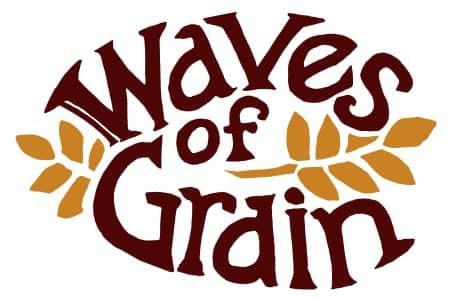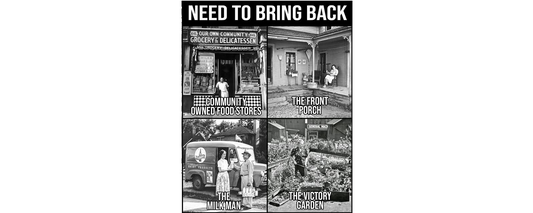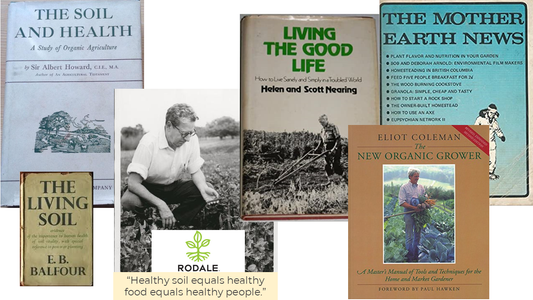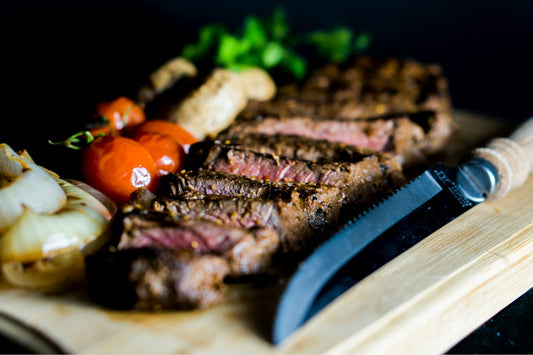In case of emergency, do not break glass!
The round-bottomed wife is a bit of a chipmunk. Hearty food in small bundles disappear into her purse – "for an emergency," she says. On our first trip to Germany together, she became particularly enamored of the single-serving packages of dark pumpernickel rye. We found these laid out on side tables at breakfast, to take for the road or on hikes. At the country inns of Germany, known as Land Hotels, breakfast is no casual affair. There are hard-cooked eggs in shell, many sliced cheeses and meats, pickled vegetables, sweet rolls and other breads, all of great quality and copious quantities. To remind you of its essential place in a sexy, healthy lifestyle, packages of personal-sized rye breads showed an earnest-looking young couple, just about to smooch.

As it turned out, keeping Pumpernickel on hand saved us on several occasions – and not only by pairing it with cheeses and hard sausages of the kind you can buy in a gas station convenience aisle.
Driving west from Bad Kreuznach, Germany via Trier to Luxembourg, we arrived at a tiny hotel recommended by an astute friend, discovering a well-appointed B&B that was really a fancy restaurant with a few guest rooms tucked on the 2nd floor. We enjoyed a shockingly affordable and spectacularly delicious multi-course meal, including langoustine and fennel in a cream sauce. Mary was lying on the bed in what she later described as a “gourmet semi-coma,” dozing off and wondering where I had gotten to. She vaguely noticed a dull thud, as if some fat bird had thrown itself against the window pane. The windows in Europe are like aquarium glass, thick and heavy. When a something strikes a window, you hear a loud, low thud.
When the fat bird-like object hit the window a second time, she jumped out of her slumber and out of bed. Always ready and capable in an adventure, Mary ran down the stairs, thoughtfully grabbing the key on her way out. It was precisely the key that I had forgotten to take with me, on my more leisurely departure a half hour earlier.
I had gone out for a post-prandial smoke (this was back in the day). Once outside, I was immediately aware of an intense conversation going on. I took out my company-issued iPhone 3G, with its very good microphone, and walked up the lane. Stationed at various points around fields and woody bits, nightingales were reviewing the day’s events. I stood there, mesmerized by the hypnotic concerto grosso that sounded like birds competing on wooden flutes. I still have the recording.
When I returned to the restaurant-hotel I realized I had no key. I immediately thought to throw gravel up at Mary's window, but decided it was too risky with such a historic building in view. I walked around but everything was locked up tight and the proprietors were nowhere to be seen, apparently having packed it in for the night. I rummaged around in the back seat of the rental car. Then in the trunk. Then in the front. I was looking for a shoe or something soft but heavy that I could throw at a 200-year-old building to wake a sleeping wife. Not finding anything, I became desperate, tearing open the glove box. And there it was. A handy, single-serving package of emergency pumpernickel. Perfect!
Mary emerged from the building, clutching the key. She demanded to know what I was throwing at her window. Before I could answer, she was grabbing the package of pumpernickel from my hand, still curiously intact despite its recent assault on the windowpanes. “What…?”
She bought several more missiles the next day, to keep on reserve. "After all," she said, thoughtfully, "I've never been courted with pumpernickel before." After meetings in Luxembourg and then in Liège, Belgium, we arrived after dark at our next lodging in Ghent. We had so much ground to cover by car, I kept driving while Mary served dissociated sandwiches, by cutting chunks of bread, cheese, and charcuterie with her pen-knife and tucking them into my mouth. She was able to sneak this item through airport security, repeatedly, because it was on her keychain, with the blade flipped back into a case that looked like a key. The knife, along with the pumpernickel packages, made for easy traveling that day.
Mary had been looking for cool places to eat in Ghent. She found an art café that offered guest rooms upstairs. We switched our reservation so we could check it out. This was before the advent of Airbnb, so it took sleuthing to find interesting spots. We got on famously with the hosts, a couple of guys who lived in a garret up several steep, old staircases, where we talked art and life until late. Our own room was a gracious studio with high ceilings and windows on the third floor.
After that, I somehow managed to lock myself out of the building, again. This time, there were no nightingales. It was raining. How quickly a new routine can form! I went right to the car and pulled out my trusty loaf of pumpernickel. Then, standing in the rain, I tried to spy which window might be ours. The buildings in Ghent are ornate, tall, and skinny, very tightly packed. I had to remap in my brain the trip up to our room and back, and finally settled on a window that must have Mary behind it. The light was on. It was impossibly far up in the heavens. I doubted my missile could reach so high. Luckily, I had been a pitcher and a third baseman during my Little League career. After 5 or 6 attempts to get my arm working again and increasingly jacked up on adrenalin at the thought of waiting for hours in case Mary had fallen asleep, I finally hit my target.
Mary tumbled out of the door moments later, again clutching the key. “You didn't,” she said, incredulous. She couldn't decide which was more impressive, me locking myself out on the street for the second night in a row and having to access the emergency pumpernickel again, or figuring out the location of the room and hitting the window from such a distance. The odds for each were vanishingly small.
I was remembering this pumpernickel story last fall, when we helped Flynn grind rye berries into flour for bread-making. She and Soma were cooking for a private event at a local farm, here in Loveland, Colorado. The farmer has been growing rye for many years but struggled to find processors that will take her grain in for cleaning, a necessary step before grinding. Truth be told, there are two cleaning steps for rye. The first is to get the large, field debris out of the grain, and the second is to blow all the finer chaff and dirt off. Her crop was too small for the big processors. There aren’t any small-scale processors left in Front Range of Colorado.
For the event, Flynn and Soma wanted to offer rye bread with the meal, using the farm’s grain. Flynn had worked as a baker. I asked if they could bake outside at the farm, using a fire pit. I explained how I had seen traditional German rye bread made and offered to come build an oven and fire. I also said they could use our hand-turned mill to grind the grain.
Days before the event, Flynn and Soma arrived with a bag of grain. We picked out the large debris by hand, and then set up a makeshift winnower using large mixing bowls and a box fan set up on chairs on our brick patio. Later, Flynn and her friend Quinne came over to grind the flour.
First, we disassembled and cleaned the handmill. Then we mounted it on a heavy table outside on the back deck. We put all the grain through once, to crack it. Finally, we cranked it tighter and put half of the cracked grain through a second time to make the flour. It was not a hot day, but that is hot work. With three of us there, we made quick work of it only because we could trade off. Each of us could turn the mill for a few minutes, but then take a longer break. I think Quinne took my last turn for me, as I was tuckered out. The cracked rye and the flour looked and smelled very good.

At least we learned why the recipe calls for half cracked and half ground. This is the minimum effort to achieve something that works as bread. The low effort is essential if you are doing field work as a farmer or any other labor, and also need to cut your own firewood, grind your own flour, and knead your own bread.
I learned how to make this bread by watching Peter Schumann, a founder of Bread & Puppet Theatre. When I was 15, I stayed in a tent for 10 days just in back of Peter’s home in Glover, Vermont. I was there as a performer, rehearsing and helping prepare for The Domestic Resurrection Circus – an annual puppet festival in northern Vermont. Peter and his wife Elka were born in Europe in 1936, she in the Soviet Union and he an ethnic German in Silesia (an area where Poland, Germany, and Czechia traditionally overlap, with a large German-speaking population).
Peter is an artist. When I was there, he got up every morning and went outside to grind rye, by hand. He mixed 1:1 rye flour and cracked rye in water to form a slurry. Then he poured this into his long, shallow wooden vats and let it sit for, I think, 2 days. At that time of year, just before the puppet festival, he was baking every day. One batch came out of the vats to make the loaves, yesterday’s batch was still setting up in another set of vats, and a new batch was mixed and put into the newly empty vats.
The oven was outdoors in back of their house, made from brick and fired with good hardwood. He ground his grain, mixed his slurry, and kept his vats at work tables right there.
After two days (this can be a shorter time if the weather is hot, or longer if cold), the now pasty mix is turned out of the vats. Equal parts of freshly cracked rye and ground flour were kneaded into the wet mix to form a stiff dough. The dough was formed into loaves and then rolled in whole and/or cracked rye kernels to form the crust. The loaves were set on baking sheets or in bread pans and covered to rest for 4 or more hours. Then the bread was transferred into the hot and ready wood-fired oven to bake.
Like any bread, you can add more or less (or no) salt before baking it. If you add salt to the slurry, it slows the fermentation. Sometimes you want that delay, but otherwise add it later with the dry, before forming the loaves. Or, you might add salt only to the crust, sprinkling it on when rolling your loaves in the kernels. In Europe, no-salt bread is more common than in the US. The opportunity afforded by no-salt or low salt breads is that you can spread even saltier things on the finished product. I don’t recall Peter’s approach on salt during the baking process, but I do remember that his main strategy was to serve the bread with aioli, made from minced garlic, egg yolks, olive oil, and lots of salt.
As a performer, I ate the bread for 3 meals a day, usually as the main course. It was very nourishing, with butter (and, if lucky, with maple syrup). On the morning of the festival, I remember big wooden bowls with round bladed knives that worked in the hollow of the bowl like a nut chopper. In went lots of peeled garlic to be minced. With aioli, the bread was newly revealed as a perfect food. [Here is a video of Peter's bread and aioli being served at the festival in Vermont (see 0:23:42)]
At the time, I assumed that the yeasts responsible for tenderizing and flavoring the rye must be in the vats. For this reason it hadn’t occurred to me that I could ever make a similar bread. More recently, I read that native yeasts arrive by air and from the grain itself (if it hasn’t been killed through irradiation or sterilizing). If we could ferment (sour dough) the rye without using an old wooden, yeast-infused vessel and with no added yeast, it was worth imitating Peter’s bread-making process to see what happened.
Still, Flynn and Soma were catering a one-time event and already taking a risk with an untried recipe. Flynn made two batches, one with no added yeast, plus a second batch using dry baking yeast. She mixed the cracked rye and rye flour into a slurry with water and waited 2 days, added more dry and set the loaves to rest. In the end, I couldn’t make it to the event, so she baked the loaves in a regular oven.

The farm’s own rye made a delicious and sturdy bread that was a hit with the guests. Flynn reported that the native yeast version tasted better and was more popular than the commercial yeast version.
WARNING: These loaves are not soft like the Mestermacher pumpernickels. Even in an emergency, please avoid tossing them at buildings.




